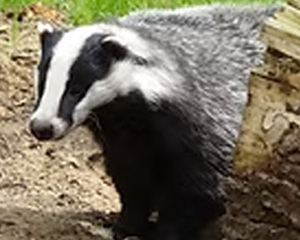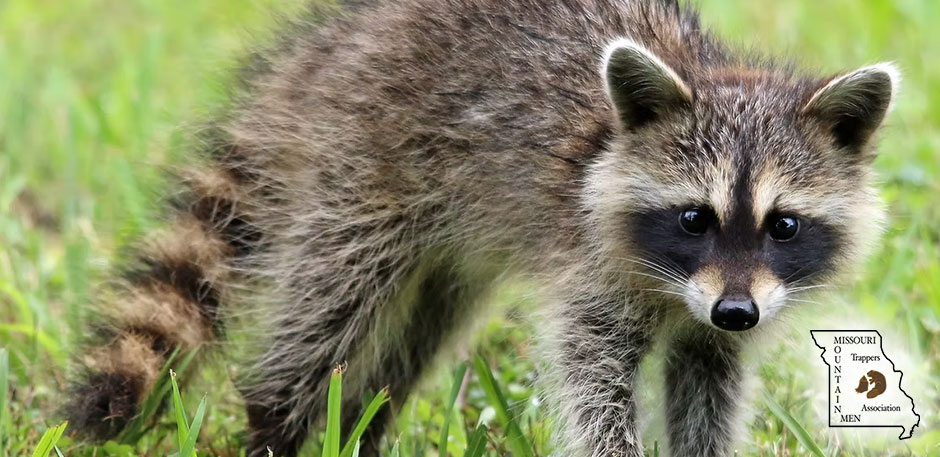Badger - Commonly Trapped Furbearer
UTILIZING OUR ABUNDANT MISSOURI WILDLIFE

Badger
Fast Facts
- Length: 30–35 inches
- Weight: 12–16 pounds
- Teeth: 34
- Claws: Long, prominent fore-claws
- Mating Season: August–September
- Litter Size: 2–7
- Hibernation: None
- Life Span: Up to 12 years
Badgers are well-known for their digging habits and fierce dispositions when defending themselves. A predator of gophers and prairie dogs, they favor prairies, open farmlands, and deserts. Because of their extensive excavations, they’re sometimes unpopular with farmers and ranchers. Viewed with either affection or disgust, badgers are expanding their ranges eastward.
Description
Adult badgers measure 30–35 inches in length, including a short, well-furred tail of 5–6 inches. Their bodies are broad and flat-backed. Adults generally weigh 12–16 pounds, though weights may exceed 20 pounds in late fall as they build fat reserves for winter.
The fur appears mostly gray with a grizzled effect from long guard hairs that have black bands ending in white tips. Underfur is light tan or creamy white. A white stripe runs from the nose between the eyes and back over the head, often ending between the shoulders. Ears are set low on the sides of the head. Lower legs and feet are black, with five toes on each foot; the four front toes have exceptionally long claws (1½–1¾ inches).
Badgers have 34 teeth, including four sharp canines. All badgers have a pair of musk-producing glands near the anus and two skin glands on the belly.
Reproduction
Badgers mate in August or September. After delayed implantation, embryos begin developing in late February when eggs attach to the uterus. Gestation lasts about nine weeks, producing 2–7 young (three is typical). Although females have eight teats, litters are small. Females raise the young alone, and juveniles disperse in late summer to live solitarily.
Habits
Badgers are territorial most of the year. Territories average 3–4 square miles, varying with rodent availability. They prefer sandy or porous soils but may use wooded areas with suitable digging conditions. Except for juvenile dispersal, they rarely emigrate. Badgers usually walk but can trot or gallop when needed.
They have excellent hearing and smell, helping them locate underground prey. Vision is good enough to detect danger. They may plug exit holes before tunneling to prey. Long fore-claws loosen soil while hind feet kick it backward, often throwing dirt 6–8 feet in an arc. They close their eyes when digging and rely on smell and hearing.
Badgers maintain several dens across their territories. Typical tunnels run 6–8 feet deep and 20–30 feet long to a main chamber, elevated to avoid flooding. A smaller chamber serves as a toilet. Long-used dens may have 30–40 exits and reach depths of 15 feet. Bedding grasses and leaves are occasionally brought out to air and later reused.
Some badgers tolerate foxes or coyotes sharing their dens. One historical account from 1871 describes a lost boy sharing a den with a badger that later brought him food.
Range
Badgers are common across the western and north-central U.S. and have gradually expanded eastward. They are rarely found in the southeastern states.
Tracks and Scat
Badger tracks are easily recognized by the long claw marks from the front feet. Droppings are seldom found because they’re usually deposited in an underground toilet chamber within the den system.
Contact Missouri Trappers Association
Get in touch with the Missouri Trappers Association by filling out the contact form. We appreciate your support!
For questions regarding your membership, please call
Joslyn Search: (660)292-1911


